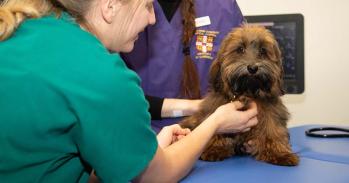
A new simulator could help the elderly or disabled users engage more effectively with electronic devices, including websites, smartphones and digital television.
A new simulator could help the elderly or disabled users engage more effectively with electronic devices, including websites, smartphones and digital television.
Considering any part of society as ‘special’ can never solve the accessibility problems of many interactive systems
Pradipta Biswas
The simulator, developed by researchers at Cambridge’s Engineering Design Centre, allows designers and software engineers to see a site through the eyes of people with a wide range of abilities, and adapt their design accordingly. It can also be used to customise the way in which a site displays according to an individual’s specific needs and can be integrated into other electronic devices.
Web design has become more responsive to the requirements of its users, especially as the way we consume information online changes: for example, many websites will render differently whether a user is viewing it on a desktop, tablet or mobile. When done well, this type of responsive design results in sites which are uncluttered, easy to navigate and easy to read.
But for users with physical, motor or cognitive impairments, interacting with websites, even well-designed websites, is challenging. Simply clicking on a link, an action which most users can complete in a fraction of a second, can be difficult. For example, a user with Parkinson’s disease will often take much longer to land a cursor on the correct item in a drop-down menu, and if the links are quite close together, the wrong link altogether could be clicked. This makes for a frustrating experience, and can prevent many people from accessing information online.
According to the World Bank, between 10 and 12 per cent of the worldwide population have a condition which restricts their use of standard computer systems.
“Lack of knowledge about the problems of disabled and elderly users has often led designers to build non-inclusive systems,” says Dr Pradipta Biswas of the Engineering Design Centre. “At the same time, research around making these systems accessible often focuses on making tailor-made solutions for different impairments, which is inefficient and expensive, rather than making adaptable solutions which can be used across a range of different platforms.”
Existing design practices often isolate elderly or disabled people by treating them as users with special needs. “Considering any part of society as ‘special’ can never solve the accessibility problems of many interactive systems,” says Dr Biswas. “Designers should consider users’ range of abilities early in the design process, so that any application they develop can be adapted for people with a wide range of abilities.”
In collaboration with researchers at the University Computer Laboratory, Dr Biswas has designed a system to help designers develop inclusive systems by simulating the way in which people with a range of abilities will interact with a site.
There are currently several sets of guidelines which spell out the basics of inclusive design to software engineers. However, most of these guidelines do not adequately analyse the effects of impairment on interaction with electronic devices. Additionally, the simulator designed by Dr Biswas is far more comprehensive, as it covers a wide range of impairments.
Using a series of algorithms based on extensive user testing, the simulator predicts the eye movements and cursor paths for a range of users trying to perform a certain action – choosing an item in a drop-down menu, for example. A line on the screen will show which path the user took to get the cursor to the correct item on the drop-down menu, and how long the task took them to complete.
The simulator allows designers to choose different levels of impairment, or the effects of a particular disease, such as Parkinson’s or age-related macular degeneration, or how the site will behave on a certain type of device, in order to visualise how the site appears to people with a range of abilities and adapt the design accordingly.
For example, a common problem which people with motor impairment have is stopping the cursor movement: once their hand has started moving, it is difficult to make it stop, especially on a specific point. The cursor movement of a motor-impaired user is characterised by many random movements at the beginning and at the end of the action.
There are several ways for a designer to adapt the site for a user with this type of impairment. One is simply to increase the size of the buttons or links on the page, or to increase the space between them. Another option would be to use a “gravity well”, meaning that the cursor is drawn towards the centre of the button – so even if a user only clicks near the edge of their target, the action will be completed.
In addition to the simulator, Dr Biswas’ algorithms can be added to a site in progress to test a site’s usability, or added to a live site, allowing users to set up profiles. Once the user has set up a profile, the page will render differently according to their needs, whether that is making the fonts bigger, changing the background colours, or spacing buttons and links farther apart.
“This adds another degree of personalisation to the web browsing experience,” says Dr Biswas. “Many sites allow users to create profiles according to their interests; which is of course a useful tool for advertisers. Adding an inclusive design element to a site, however, will allow that site to be usable for much more of the population.”
Dr Biswas’ technology is one of this term’s i-Teams projects, a University programme combining multi-disciplinary teams of students with industry mentors and Cambridge inventions to assess the commercial viability of new technologies and product designs. Dr Biswas has published two books on inclusive user modelling and multimodal adaptation of user interfaces, and has contributed towards developing international standards on user modelling and accessibility through the European Commission and International Telecommunication Union (ITU-T).
For more information, please contact sarah.collins@admin.cam.ac.uk.
This work is licensed under a Creative Commons Licence. If you use this content on your site please link back to this page.





